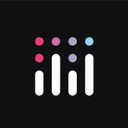Overview
What is SAP Predictive Analytics?
SAP Predictive Analytics is, as the name would suggest, a statistical analysis and data mining platform that can be deployed with SAP HANA.
Recent Reviews
Awards
Products that are considered exceptional by their customers based on a variety of criteria win TrustRadius awards. Learn more about the types of TrustRadius awards to make the best purchase decision. More about TrustRadius Awards
Pricing
Entry-level set up fee?
- No setup fee
Offerings
- Free Trial
- Free/Freemium Version
- Premium Consulting/Integration Services
Would you like us to let the vendor know that you want pricing?
2 people also want pricing
Alternatives Pricing
Product Demos
Automated Analytics Demo
YouTube
Product Details
- About
- Competitors
- Tech Details
What is SAP Predictive Analytics?
SAP®
Predictive Analytics software brings predictive insight to business users,
analysts, data scientists, and developers in your company. The products offers predictive automation, allowing customers to unlock the potential of Big Data from
virtually any source. By automating the building and management of
sophisticated predictive models to deliver insight in real time, this software
aims to make it easier to make better, more profitable decisions across the
enterprise.
SAP Predictive Analytics Features
- Supported: Automate analytics with Python API
- Supported: Publish predictive models to business applications
- Supported: Support data privacy to achieve legal compliance
SAP Predictive Analytics Competitors
SAP Predictive Analytics Technical Details
| Operating Systems | Unspecified |
|---|---|
| Mobile Application | No |






